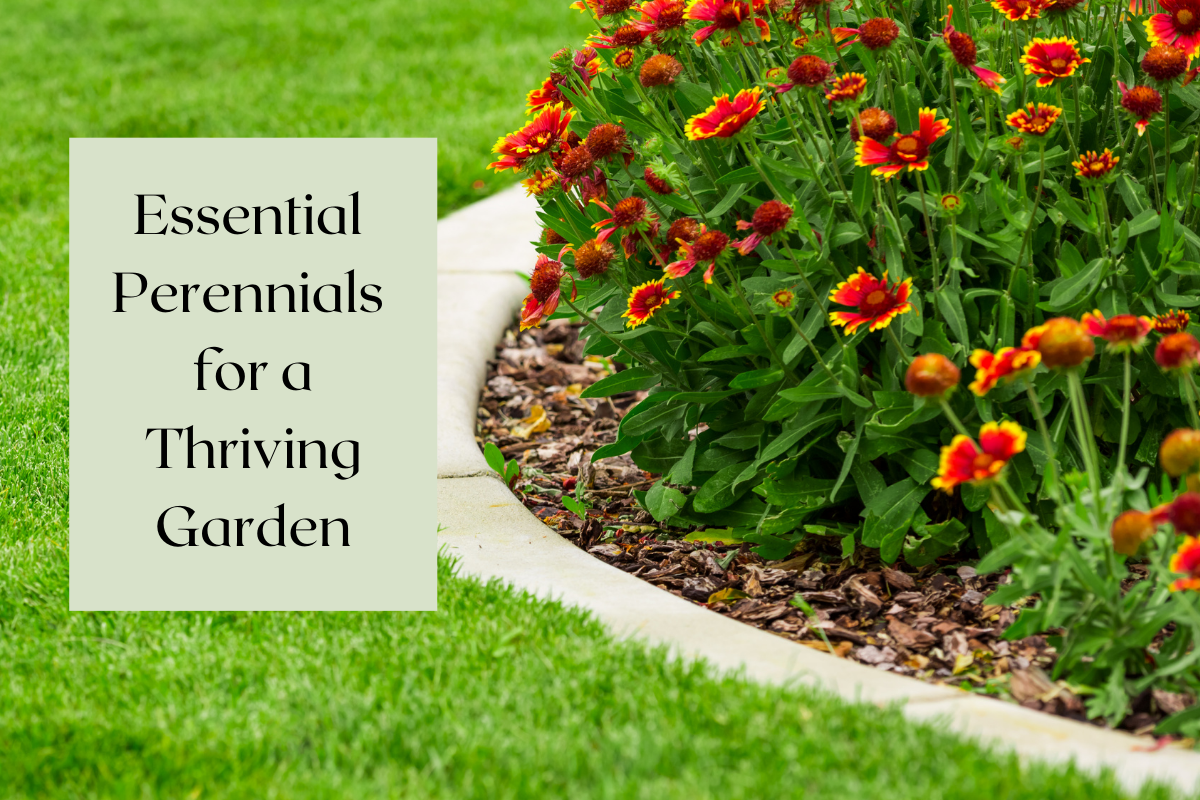As the climate continues to evolve, Central Ohio has experienced increasingly dry summers, making the need for drought-resistant gardening more apparent than ever.
Such conditions call for a low maintenance perennial selection to ensure gardens survive and thrive.
This blog explores the best drought-resistant perennials suited for the Central Ohio climate, offering you a lush and vibrant garden, even in reduced watering conditions.
Benefits of Choosing Drought-Resistant Plants
Water Conservation
Drought-resistant plants thrive in dry conditions, significantly reducing the need for frequent watering.
By incorporating these hardy perennials into your garden, you can maintain a stunning landscape while conserving water—a crucial benefit in today’s environmentally conscious world.
This helps lower your garden’s maintenance costs and supports water conservation efforts, which are becoming increasingly crucial in Central Ohio.
Sustainability
Choosing well-suited plants for the local environment is critical to sustainable gardening.
Drought-resistant perennials adapt well to the local climate and soil conditions, requiring less supplemental watering and care.
This adaptation reduces the need for chemical interventions, making your gardening practice more sustainable and contributing positively to the local ecosystem.
Aesthetic and Functional Value
Despite their rugged nature, drought-resistant plants do not compromise on beauty.
These perennials come in various shapes, sizes, and colors, enhancing your garden’s aesthetic appeal and increasing its biodiversity.
Many of these plants also provide essential habitat and food sources for local wildlife, promoting a healthy and vibrant garden ecosystem.
From the silvery leaves of Russian Sage to the vibrant blooms of Coneflower, these plants add a visual charm that beautifies your outdoor space while standing up to the dry conditions of Central Ohio.
Your Guide to 10 Drought-Resistant Perennials for Central Ohio
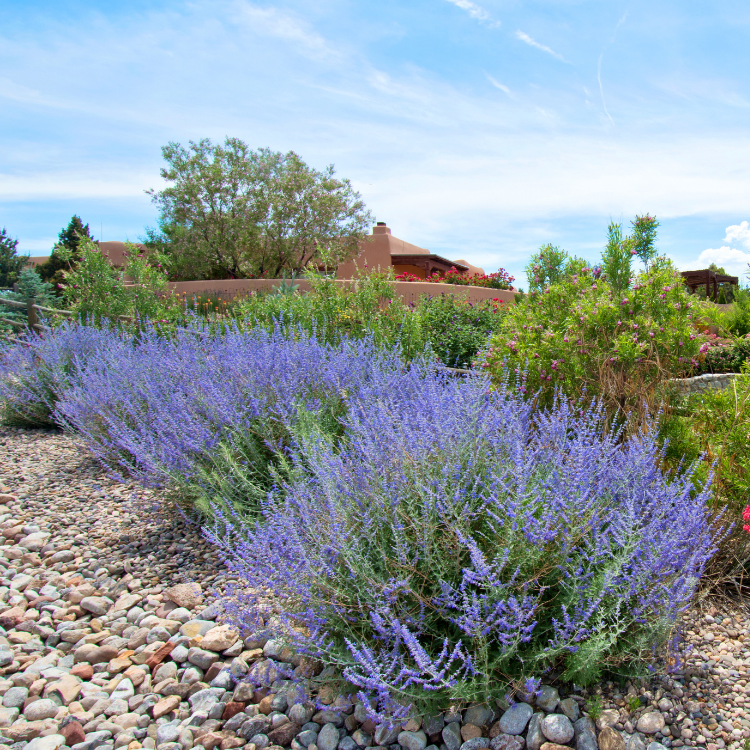
1. Russian Sage (Perovskia atriplicifolia)
Brief Description: Russian Sage is renowned for its silvery foliage and vibrant violet-purple blooms. It’s highly drought-resistant and adds a light, airy texture to your garden.
Optimal Growing Conditions: Thrives in full sun and requires well-drained soil. It’s tolerant of poor soil conditions and heat.
Planting Tips and Care: Plant in early spring or fall. Space plants are approximately 2 to 3 feet apart, which allows for growth and air circulation. Minimal watering is required once established.
Visual and Pollinator Appeal: The fragrant flowers attract bees and butterflies, making it a pollinator-friendly choice that enhances garden biodiversity.
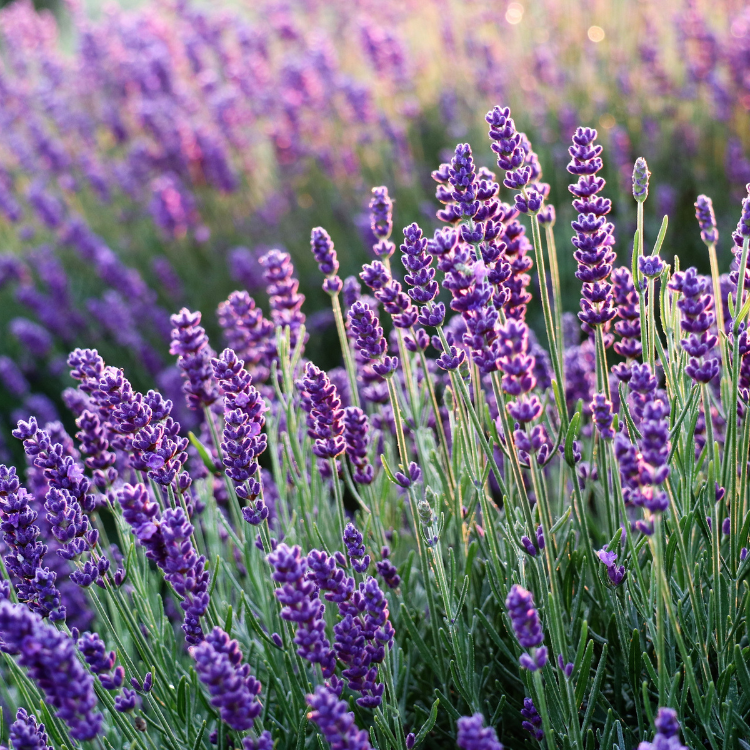
2. Lavender (Lavandula angustifolia)
Brief Description: Lavender is prized for its fragrance, beautiful purple blooms, and rugged nature. It’s perfect for creating a sensory addition to any drought-resistant garden.
Optimal Growing Conditions: Prefers full sun and well-drained, slightly alkaline soil. Poorly drained, soggy soil is detrimental.
Planting Tips and Care: Plant in spring after the risk of frost has passed. Space plants up to 3 feet apart to ensure good air circulation. Lavender requires little water once established but may benefit from occasional deep watering during very dry spells.
Visual and Pollinator Appeal: Its vibrant flowers are captivating and attractive to bees and butterflies.
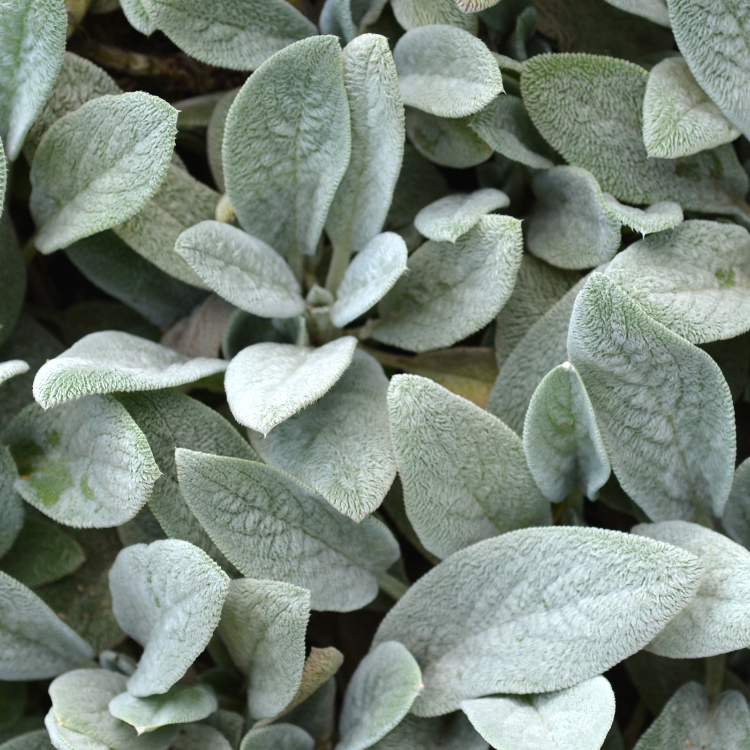
3. Lamb’s Ear (Stachys byzantina)
Brief Description: Known for its soft, fuzzy leaves, Lamb’s Ear is a robust ground cover that thrives in dry conditions, adding texture and contrast to your garden.
Optimal Growing Conditions: Performs best in full sun to partial shade and well-drained soil.
Planting Tips and Care: Space plants about 12-18 inches apart. This low-maintenance plant benefits from occasional trimming to keep it tidy and encourage new growth.
Visual and Pollinator Appeal: While not known for its flowers, the silver foliage provides excellent ground coverage and texture.
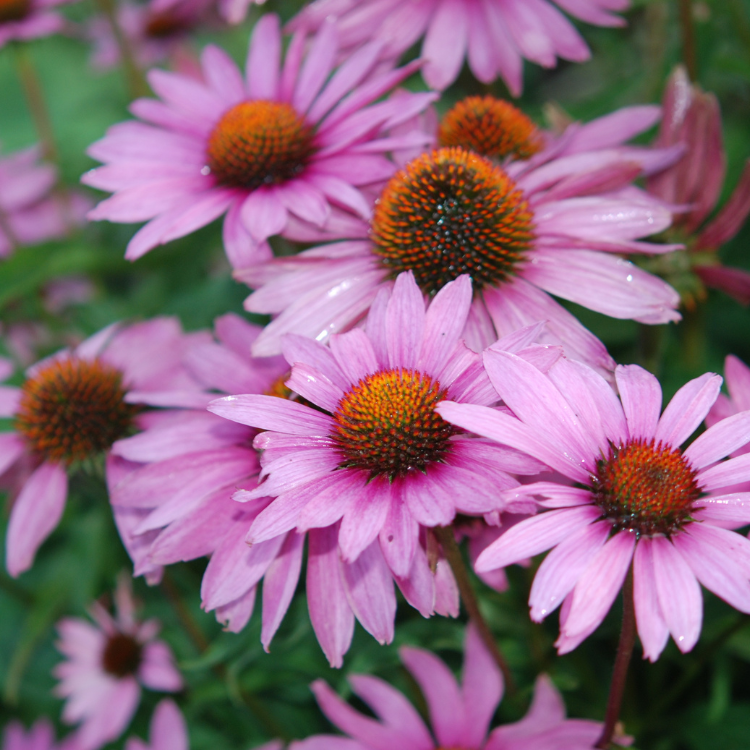
4. Purple Coneflower (Echinacea purpurea)
Brief Description: A staple in many gardens, the Purple Coneflower is admired for its large, vibrant, pinkish-purple flowers and robust nature.
Optimal Growing Conditions: Prefers full sun but can tolerate some shade. It thrives in well-drained soil and adapts to dry conditions once established.
Planting Tips and Care: Plant in spring or early fall. Coneflowers do well with space to grow, typically 18-24 inches apart. Deadheading encourages continued blooming.
Visual and Pollinator Appeal: The striking blooms are visually stunning and attract butterflies and bees, making them an excellent pollinator garden choice. The seed heads offer finches the necessary seeds to prepare for a long migration.
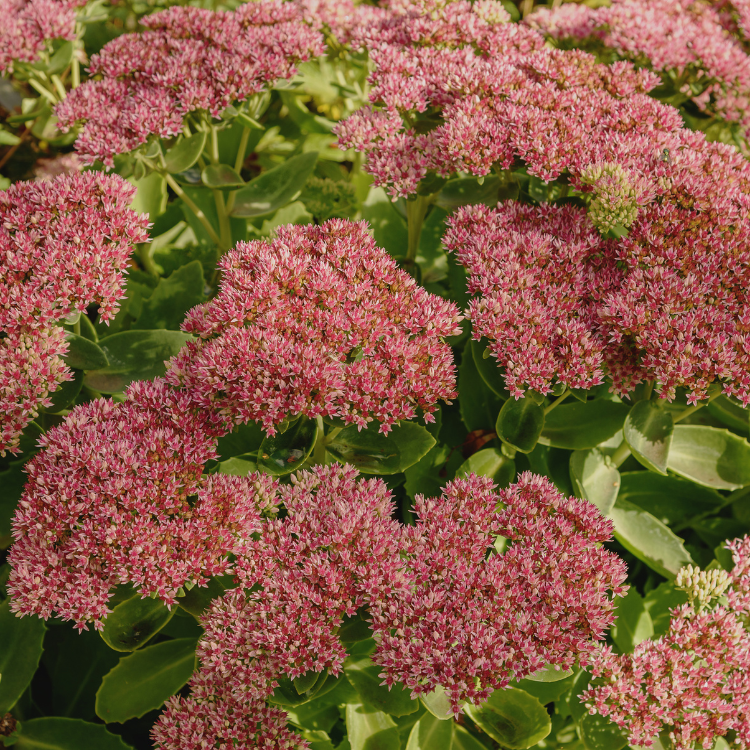
5. Sedum (Sedum ‘Autumn Joy’)
Brief Description: Sedum, or stonecrop, is valued for its fleshy leaves and star-shaped flowers. ‘Autumn Joy’ variety offers pink blooms that age into rich copper in fall.
Optimal Growing Conditions: Thrives in full sun and well-drained soil. It is extremely tolerant of dry conditions.
Planting Tips and Care: Plant sedum in spring, spacing them about 12-24 inches apart, depending on the variety. Sedum is very low maintenance and does not require much water once established. One of its common names is ‘Live Forever’.
Visual and Pollinator Appeal: The flowers attract bees and butterflies, enhancing your garden’s ecological diversity while providing late summer to fall interest.
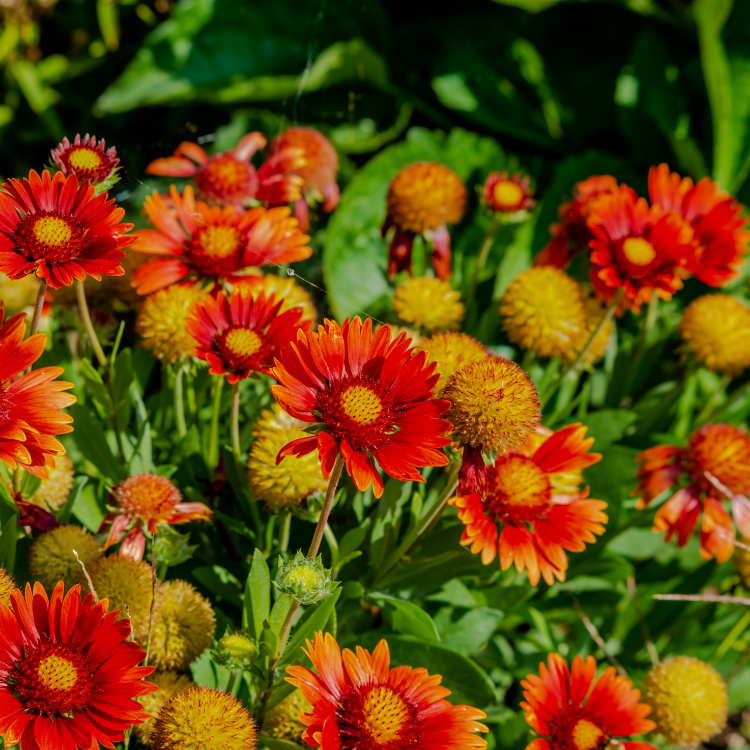
6. Blanket Flower (Gaillardia varieties)
Brief Description: The blanket flower is a vibrant, hardy perennial that blooms profusely throughout the summer with striking red and yellow flowers.
Optimal Growing Conditions: Prefers full sun and well-drained soil. It thrives in hot, dry conditions and is very tolerant of poor soils.
Planting Tips and Care: Space plants about 12-18 inches apart. Blanket flowers are low maintenance, but removing spent blooms can encourage more flowering.
Visual and Pollinator Appeal: The bright, cheerful flowers are a visual treat and attract butterflies and bees, making them a perfect addition to any pollinator garden.
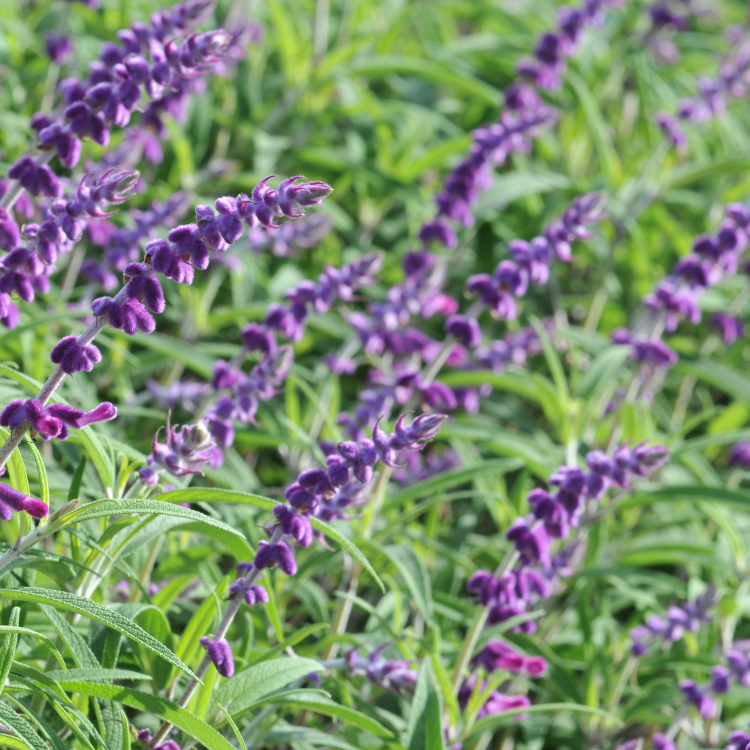
7. Bush Sage (Salvia ‘May Night’)
Brief Description: Bush Sage features stunning violet-blue flowers that bloom from midsummer to early fall, offering a long season of color.
Optimal Growing Conditions: Requires full sun and well-drained soil. It is drought-resistant once established and prefers infrequent deep watering.
Planting Tips and Care: Plant in early spring or fall, spacing about 18-24 inches apart. Cutting back spent blooms can promote a second flowering in the fall.
Visual and Pollinator Appeal: The striking blooms are highly attractive to hummingbirds and butterflies, adding vibrant life to your garden.
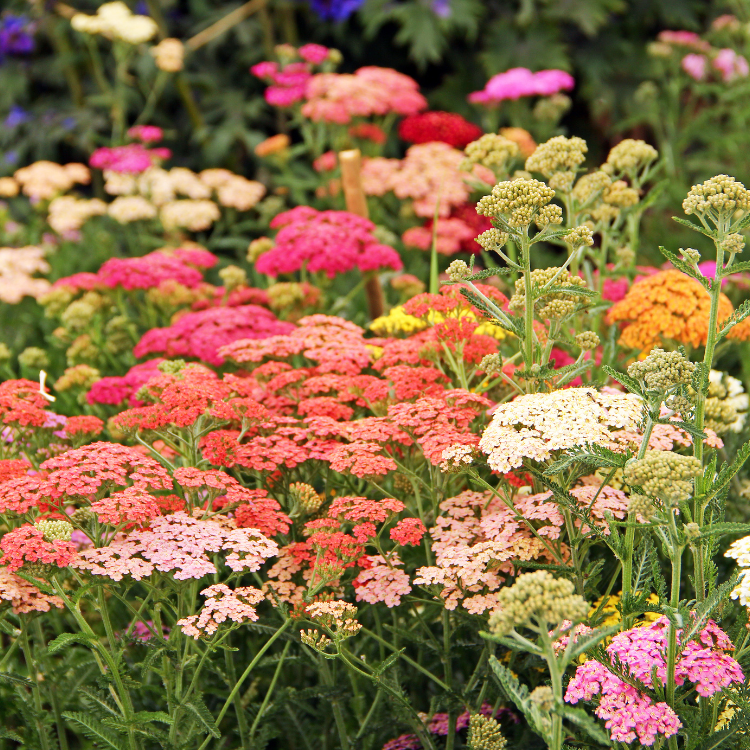
8. Yarrow (Achillea varieties)
Brief Description: Yarrow is a resilient perennial known for its flat clusters of flowers in shades of yellow, orange, red, pink, or white.
Optimal Growing Conditions: Thrives in full sun and well-drained soil. It is highly drought-tolerant and can also withstand poor soil conditions.
Planting Tips and Care: Plant yarrow in early spring, spacing about 18-24 inches apart. Dividing the plants every few years is advisable to maintain their vigor.
Visual and Pollinator Appeal: Yarrow not only adds color diversity to your garden but is also excellent for attracting various pollinators, enhancing your garden’s ecosystem.
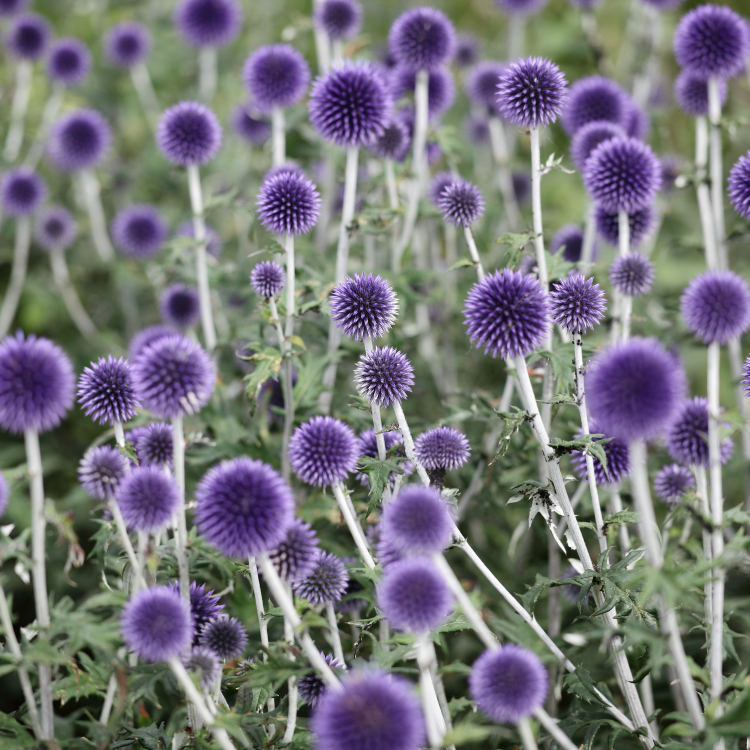
9. Globe Thistle (Echinops ‘Blue Globe’)
Brief Description: Globe Thistle is known for its distinctive, spherical blue flowers and spiky appearance, providing unique texture and color to the garden.
Optimal Growing Conditions: Prefers full sun and well-drained soil. It is very tolerant of dry conditions once established.
Planting Tips and Care: Space plants about 24 inches apart to allow for their spread. Globe Thistle requires little care beyond occasional watering during extreme drought.
Visual and Pollinator Appeal: The eye-catching blue blooms are visually appealing and favored by butterflies and bees.
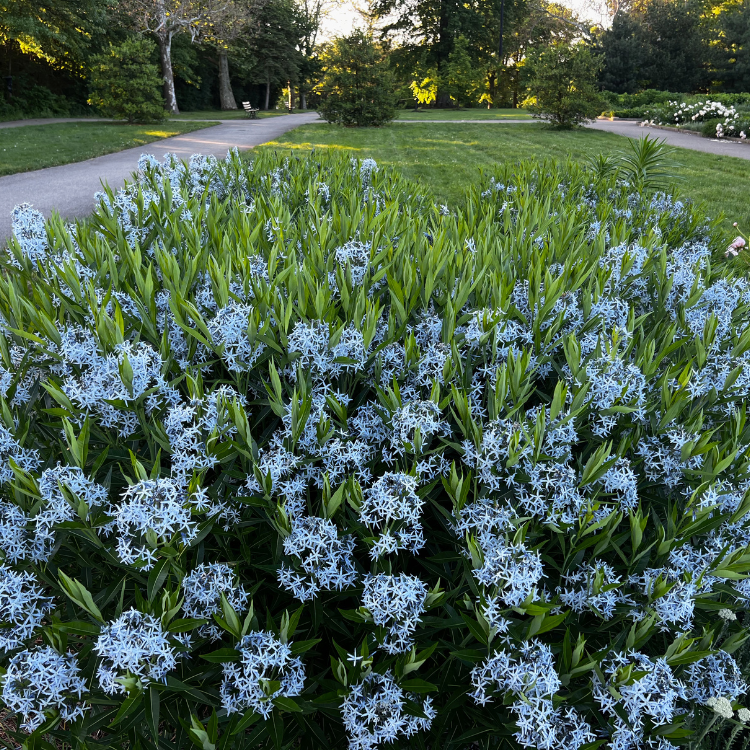
10. Amsonia (Amsonia ciliata)
Brief Description: Amsonia, also known as Bluestar, produces clusters of pale blue flowers in spring and has foliage that turns a stunning gold in autumn.
Optimal Growing Conditions: Performs best in full sun to part shade and well-drained soil. It is notably drought-tolerant after establishment.
Planting Tips and Care: Space plants about 18 inches apart. Amsonia is low-maintenance but can be cut back in late fall to tidy up the garden.
Visual and Pollinator Appeal: The delicate blue flowers and striking fall foliage make it a dual-season standout in any landscape, with the added benefit of attracting early-season pollinators.
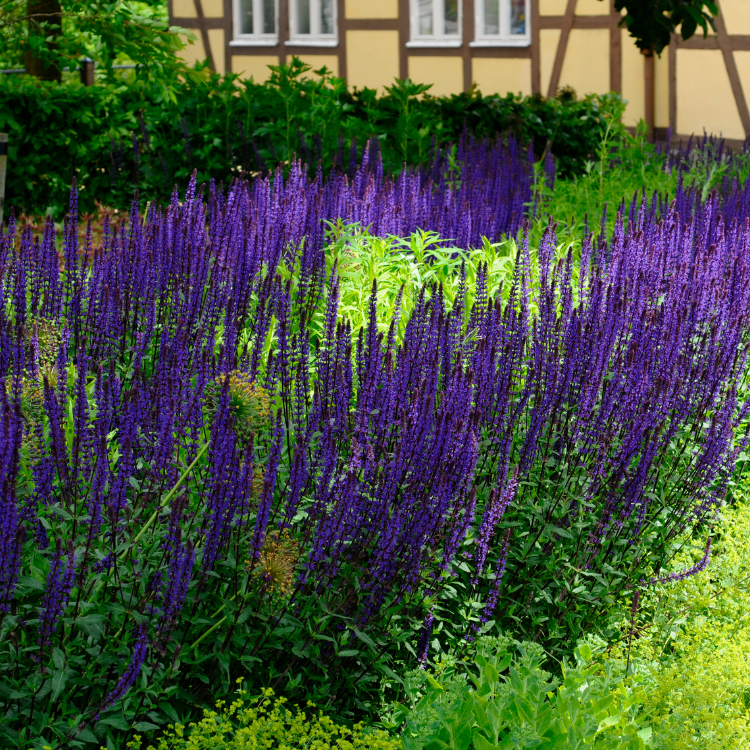
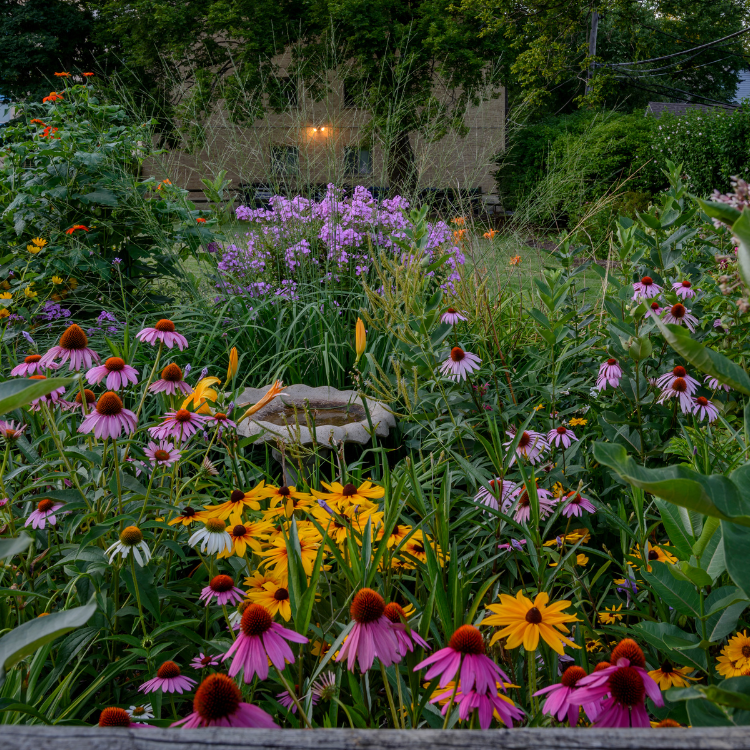
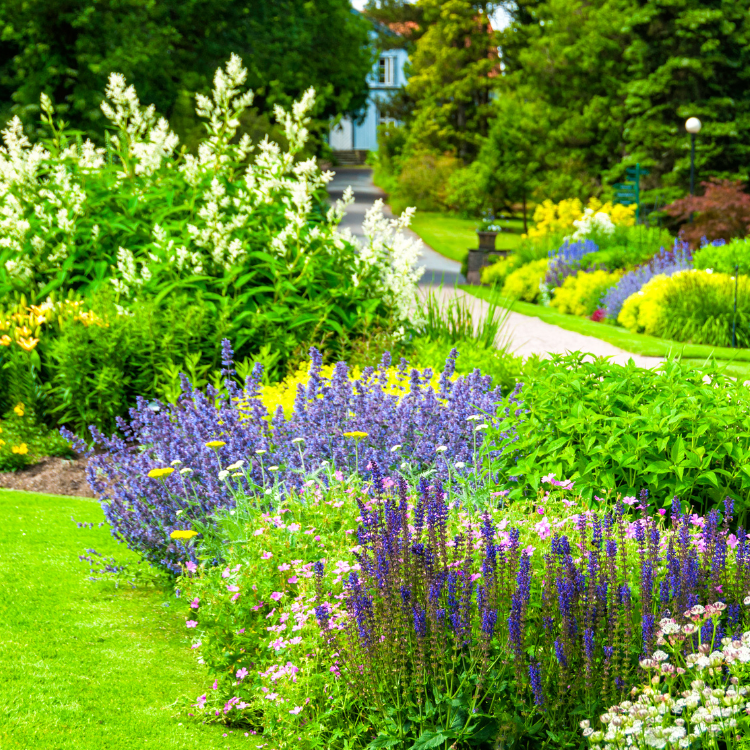
Practical Tips for Gardening with Drought-Resistant Plants
Soil Preparation:
Preparing your soil correctly is crucial for the success of any garden, especially when dealing with drought-resistant plants.
Enhance your soil with organic matter to improve its structure, increase its nutrient-holding capacity, and ensure it is well-draining.
A soil test can be beneficial to determine your soil type and help you make the necessary adjustments to accommodate drought-resistant perennials.
Mulching and Watering Techniques:
Mulch is a gardener’s best friend when it comes to conserving moisture.
Apply a layer of organic mulch around your plants to help reduce water evaporation, keep the soil temperature consistent, and suppress weed growth.
When watering, do so infrequently but deeply, encouraging roots to grow deeper into the soil and enhancing their drought tolerance.
Companion Planting Ideas:
Choosing the right companion plants can enhance the growth and beauty of your drought-resistant perennials.
Consider planting sedum with decorative grasses for a contrasting texture, or pair lavender with globe thistle for a delightful color blend.
Companion planting can also help you make the most of your space and manage garden pests naturally.
Incorporating drought-resistant perennials into your garden is a smart choice for sustainability and ensures a vibrant, resilient landscape that can withstand dry spells.
These plants offer stunning colors, textures, and benefits, making them ideal for any low-maintenance garden.
If you are looking for professional garden design, Columbus, we are here.
We offer flower bed design and complete garden landscaping. We want to be your local landscaping company.
Ready to start your journey towards a more drought-resistant garden?
Let Scioto Green Gardens + Landscaping transform your outdoor space with tailored, drought-resistant garden designs crafted by our expert team. We specialize in creating sustainable, low-maintenance landscapes that thrive in Central Ohio’s climate.
Contact us today.

